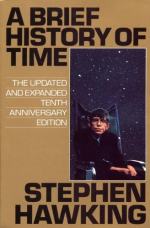|
This section contains 298 words (approx. 1 page at 400 words per page) |

|
Chapter 9 The Arrow of Time Summary and Analysis
With the attempt to unify quantum gravity with general relativity, the use of imaginary numbers leads to imaginary time, or time that can easily go forward into the future like real time, or backwards into the past. However, this also violates the second law of thermodynamics which states in any closed system, disorder always increases over time. The amount of disorder in a system is called its entropy. Therefore, movement back through time is not possible without violating the second law of thermodynamics.
Another vector of time is human memory. We remember the past, not the future, and the direction of the psychological arrow coincides with the direction of the thermodynamic arrow. However, a cosmological arrow of time involves the expansion phase of the universe and the contraction phase. Hawking first thinks that...
(read more from the Chapter 9 The Arrow of Time Summary)
|
This section contains 298 words (approx. 1 page at 400 words per page) |

|




